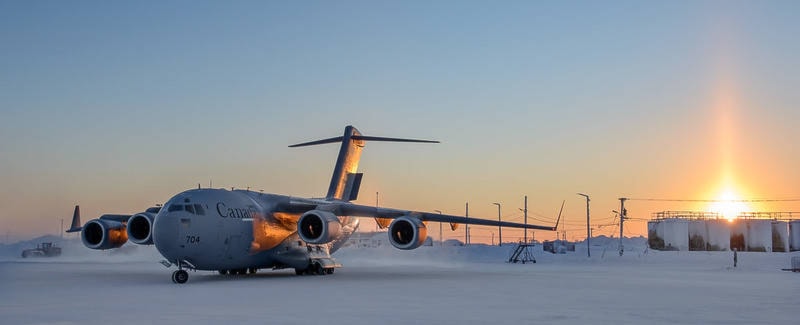A retired Canadian Armed Forces colonel thinks Resolute Bay is in a prime position for strengthening Canada’s presence in the Arctic.
The community already hosts the Canadian Air Force (CAF) Arctic Training Centre in the hamlet, as well as the Canadian Forces School of Survival and Aeromedical Training (CFSSAT).
The onset of global climate change, according to the World Wildlife fund, is warming the Arctic faster, which is bringing rising sea levels, and increasing severe weather events.
It’s also resulting in less Arctic sea ice each year which is opening the path for an increased commercial shipping season, with the Northwest Passage being ideal for shipping between Asia and Europe.
This path from East Asia to Western Europe would take about 13,600 km while the Panama Canal would take about 24,000 km going along a similar route and it would be one third the distance of going through the Suez Canal in Egypt.
“In terms of controlling maritime traffic (Resolute Bay) is in an ideal position. It’s also a choke-point for submersibles if they wanted to transit from one end to the other of the Northwest Passage,” with surveillance being more easily done at Resolute Bay says Pierre Leblanc, Canadian Armed Forces Colonel (Ret’d), now with Arctic Security Consultants during a virtual speaking event hosted by the Policy Insights Forum on May 26.
The shorter route to popular shipping destinations will be bringing an increased amount of international shipping from a number of countries across the Canadian Arctic, most notably China.
“It is going to get very, very busy and this is where China will also want to be active and present,” said Charles Sullivan, Managing Director of Boeing Canada at the same event.
From a search and rescue perspective Leblanc adds, the hamlet is positioned to “act quickly either going west, east or even north.”
“If I was a fighter pilot, I would love to have a paved runway in Resolute Bay,” said Leblanc as a way to react more quickly. “Especially now that the Canadian Armed Forces have extended the identification all the way to the northern tip of Ellesmere Island.”
One initiative that’s underway to strengthen Canada’s naval presence in the Arctic is the current construction of the Nanisivik Naval Facility at Nanisivik in north Qikiqtani, west of Arctic Bay.
It is expected to operate during the navigable season of the year between July through October, with refueling and replenishing services for vessels, such as the Royal Canadian Navy’s (RCN) Arctic and Offshore Patrol ships, which will be able to operate in medium first-year ice.
Construction of the Nanisivik Naval Facility is anticipated to be completed by Sept. 2021 with initial operation capability targeted for summer 2022.
Other military infrastructure work in the Arctic ongoing in the Canadian Arctic are runway repairs to the 5 Wing’s airfield near Happy Valley Goose Bay in Labrador and the runway extension and modernization in Inuvik.
Leblanc also adds that there’s a logistical gap where ships in bad weather would be able to find shelter, having a port in the region around Resolute Bay would also help maritime traffic.
“Right now there’s a huge area, it’s the size of Europe,” said Leblanc “and having to transit that kind of space without any support whether it’s commercial or military, is in my book a lacking we have in the Arctic.”
Currently the only deep-water port under construction in Nunavut is in Iqaluit along with the Nanisivik facility, with a number of smaller harbors planned by the Federal Government, with COVID-19 related delays taking place in 2020.
The CAF’s Arctic presence is anchored by Joint Task Force North (JTFN), headquartered in Yellowknife with detachments in Iqaluit and Whitehorse. The CAF maintains the 440 Transport Squadron based in Yellowknife. There is also Canadian Forces Station in Alert, the northernmost outpost in Canada and the 1st Canadian Ranger Patrol Group, which according to National Defence under the Government of Canada has about 1,380 Rangers across the Arctic along with 1,400 Junior Canadian Rangers.
